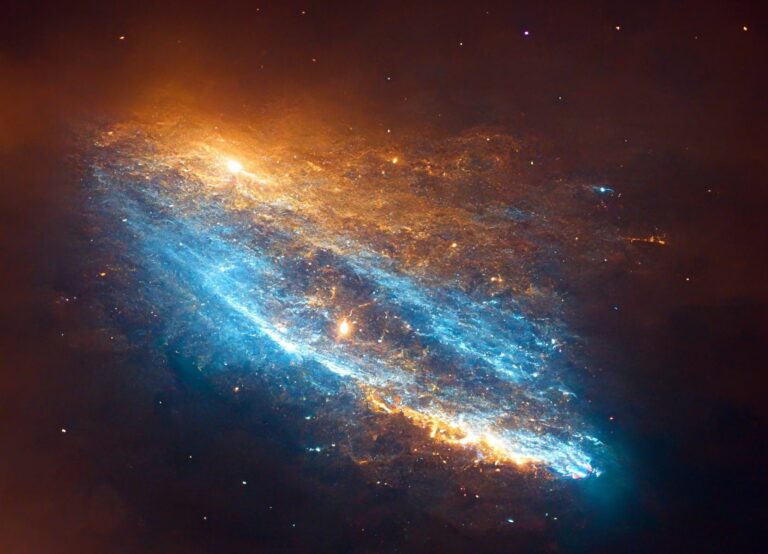After only 250 million years since the Big Bang, the record for the furthest galaxy has just been broken once more.
In a recent study that was submitted to MNRAS, a collaborative research team made use of the first batch of data from the James Webb Space Telescope (JWST) to identify a galaxy candidate, CEERS-93316, that formed roughly 250 million years after the Big Bang and that also set a new redshift record of z = 16.7. This discovery is really exciting since it shows the strength of JWST, which has just recently started returning its first round of data. Cosmic Evolution Early Release Science Survey, or CEERS, was developed especially for imaging with JWST.

The past few weeks have been weird, according to Dr. Rebecca Bowler, an Ernest Rutherford Fellow at the University of Manchester and a co-author on the paper. “Watching all the records that stood for a long time with Hubble being broken by JWST has been bizarre,” she adds. Finding a z = 16.7 galaxy candidate is a wonderful sensation; it wasn’t what we had anticipated based on the preliminary data.
This new paper cites a dozen other investigations that used a combination of ground-based observations, the Hubble Space Telescope, and the Spitzer Space Telescope to estimate objects up to redshifts z? 10 in the past.
Given that this is only the first set of data, Mr. Callum Donnan, a PhD candidate at the University of Edinburgh and the study’s principal author, thinks that it is “extraordinary” that Webb has already discovered a candidate for such a far-off galaxy. “It is significant to highlight that more spectroscopic measurements of the galaxy are required in order to confirm the redshift. Because of this, scientists call it a “galaxy candidate.”

Based on imaging data from NIRCam (Near Infrared Camera), the primary imager of the JWST, the research concluded that CEERS-93316 cannot be a low-mass star or an unobstructed active galactic nucleus. One objective for cosmologists is to understand what occurs in galaxies that young, and so soon after the Big Bang, as CEERS-93316 may be only 250 million years old.
Dr. Bowler explains that after the Big Bang, the universe went through a phase known as the “dark ages,” during which no stars had yet been formed. “This galaxy’s observations forward observations to the period when scientists believe the earliest galaxies to ever exist were forming. There are obviously a number of unanswered concerns regarding how and when the earliest stars and galaxies originated because we have already discovered more galaxies in the very early Universe than computer calculations projected.
Given this astounding discovery in only the first batch of JWST data, it’s fascinating to consider how far back in the cosmos this record-breaking space observatory can view and whether it will be able to observe the Big Bang.
According to Bowler, “JWST can theoretically discover galaxies at redshifts larger than 20, fewer than 200 million years after the Big Bang.” Although it will probably be very difficult to find these galaxies, the discovery of CERRS 93316 provides us hope that they may exist. Observe this space!
The cosmic microwave background (CMB), which is the “afterglow” of the Big Bang, is the most remote phenomena that has been detected, according to Donnan. The Planck spacecraft, which was deployed in 2009, has been the most notable instrument to have seen the CMB light, which dates from around 400,000 years after the Big Bang. Although Webb won’t be able to look so far back, it can investigate the early phases of galaxy formation.
While Donnan and Bowler concur that there are no current plans for more observations of CEERS-93316, they are optimistic that such plans will change in the future.
The Doppler effect, which astronomers employ to gauge cosmological distances, includes redshift. The Doppler effect is frequently shown by the way sound wave pitch changes as a loud item moves from one direction to the other, frequently by an ambulance or other emergency vehicle. Blueshift and redshift are terms used to describe the sound waves that are emitted by an item as it moves in your direction. The most distant object in the universe has been measured by this new study, which sets a new redshift record.
Do not forget to share your opinion with us to provide you with the best posts !





0 Comments